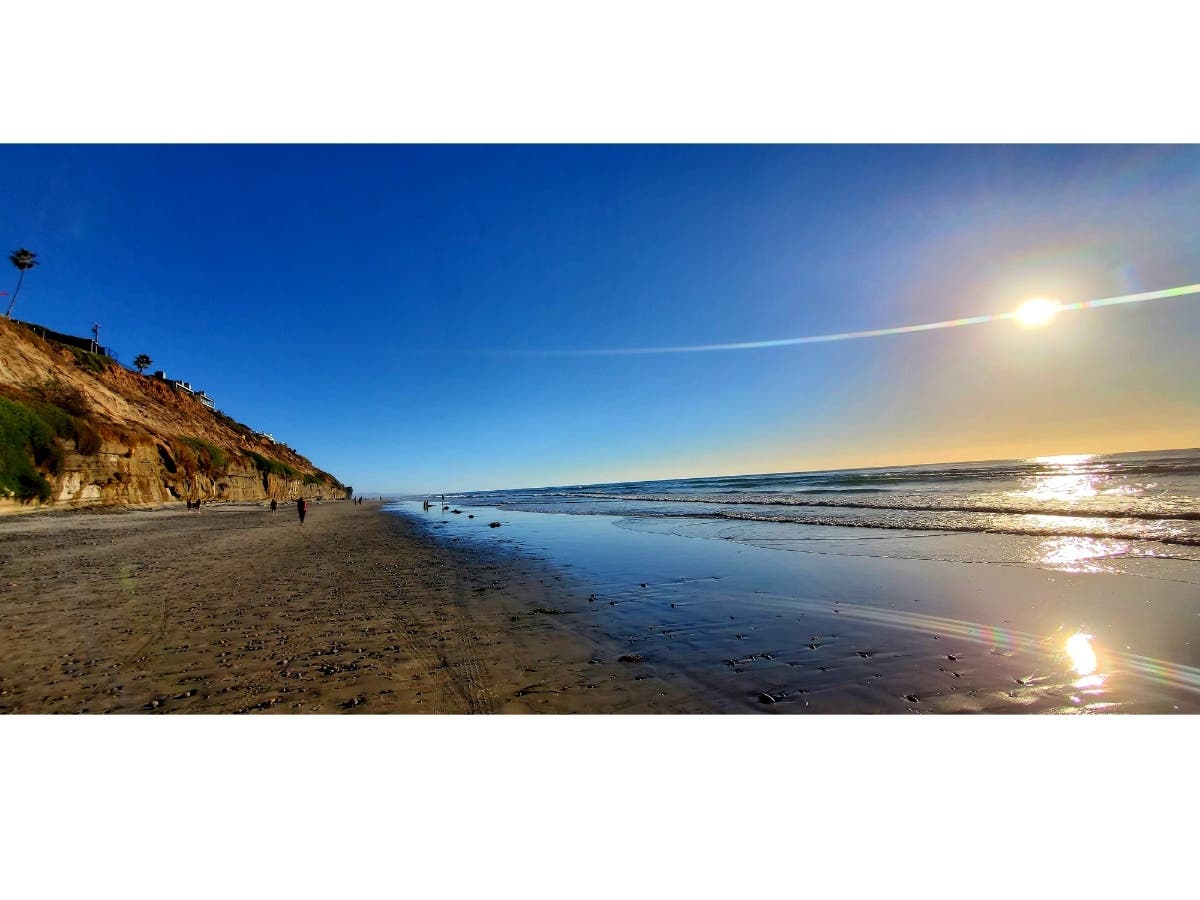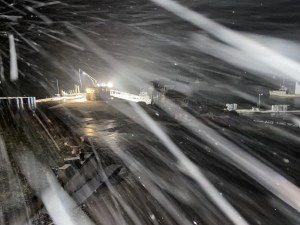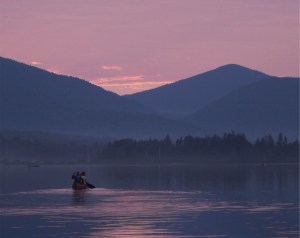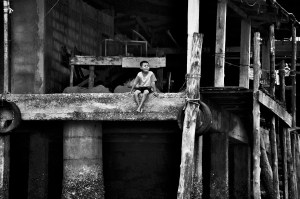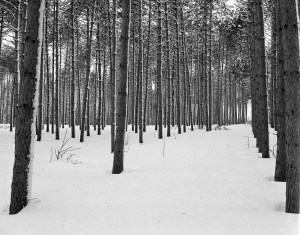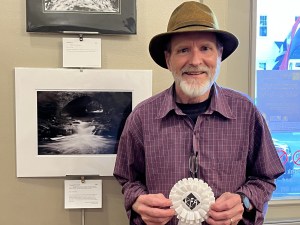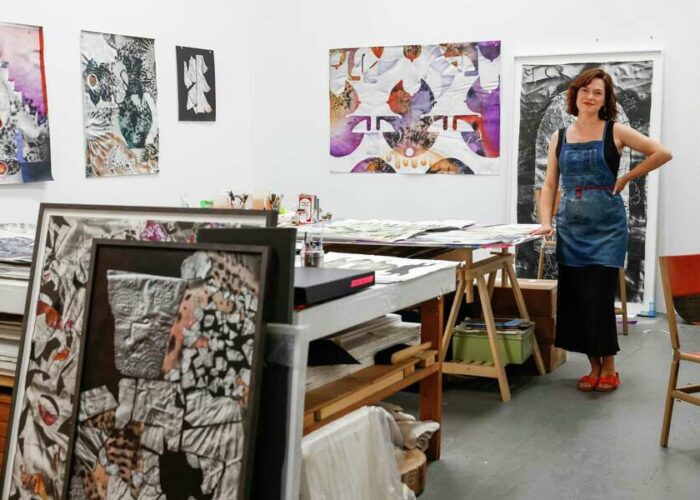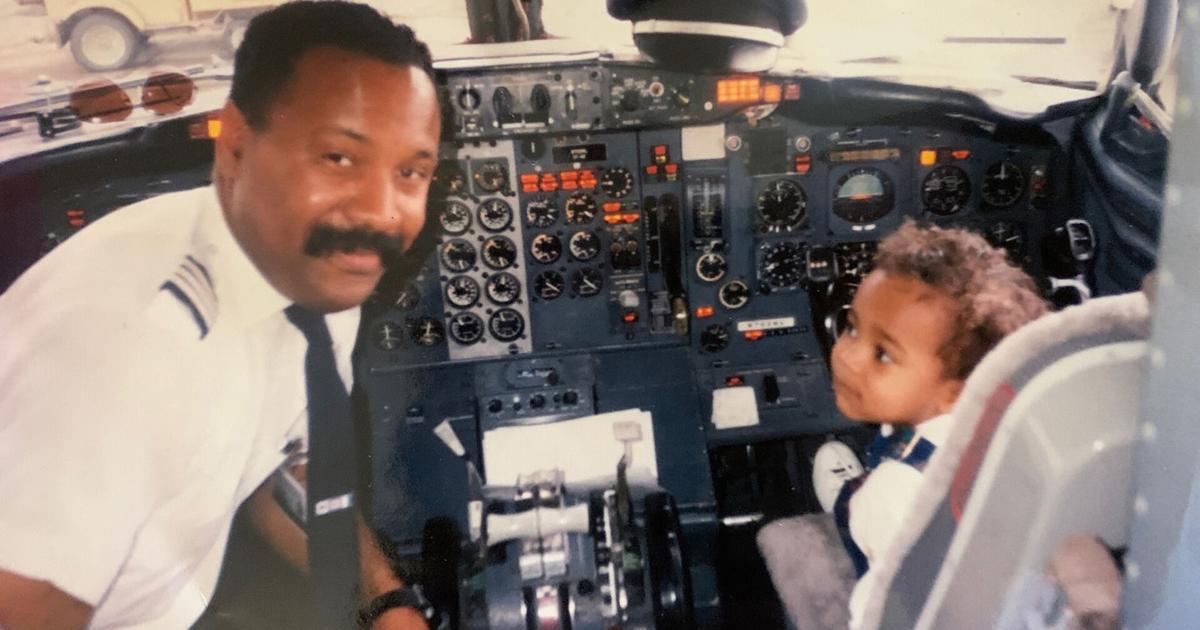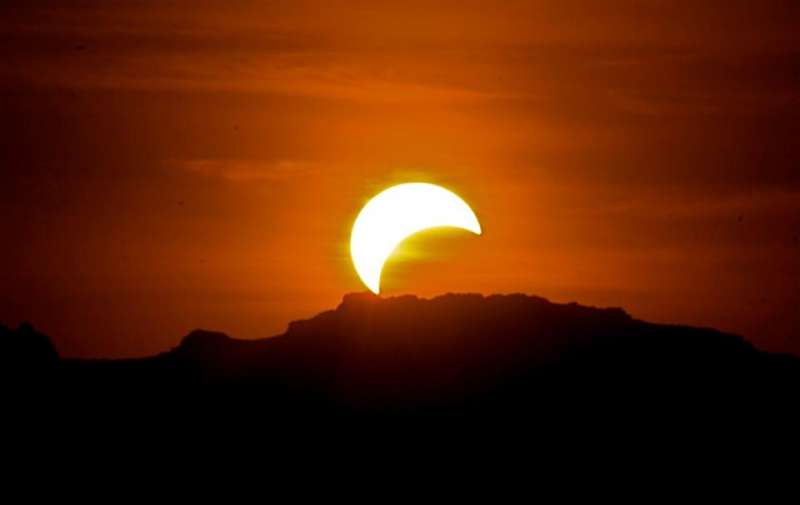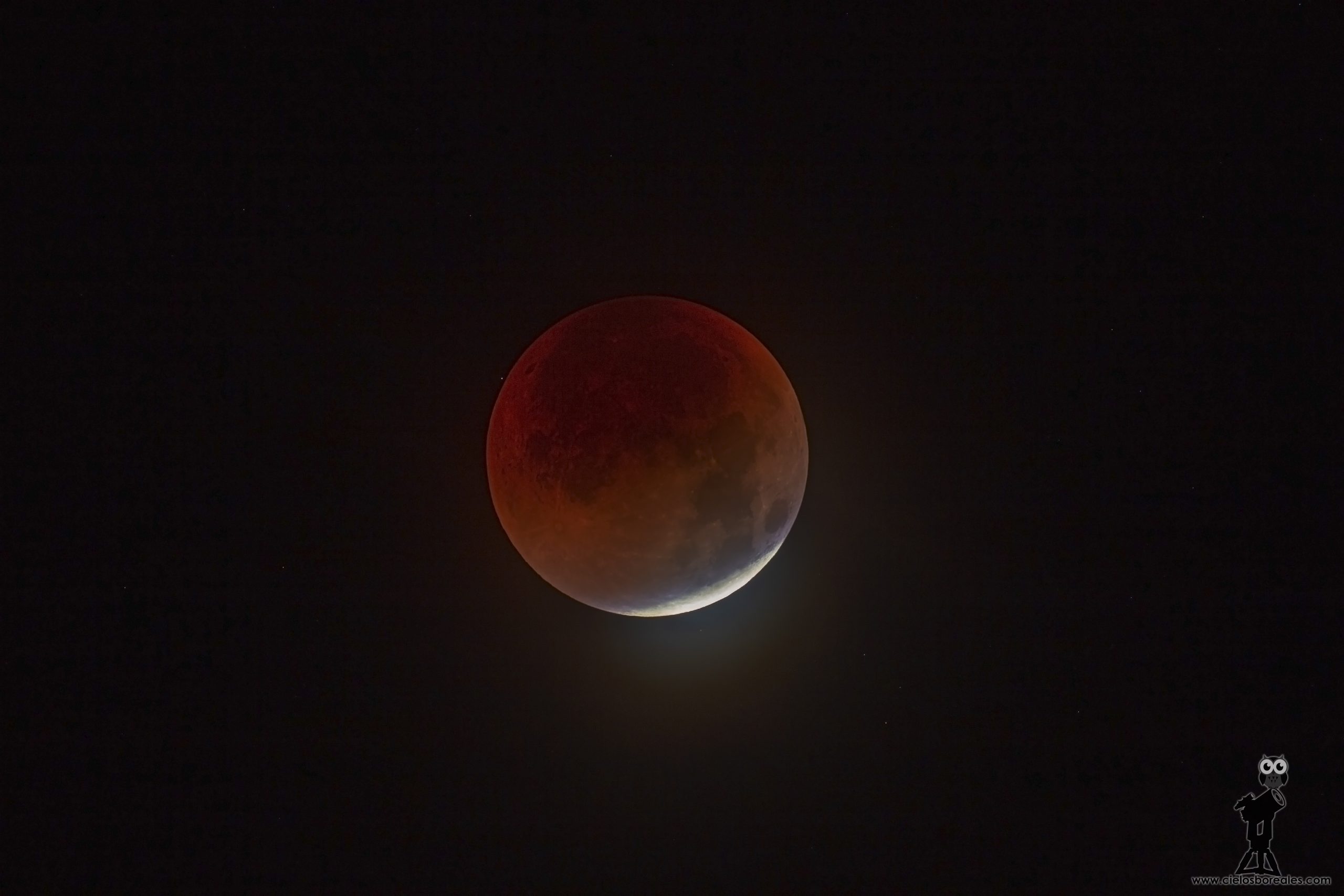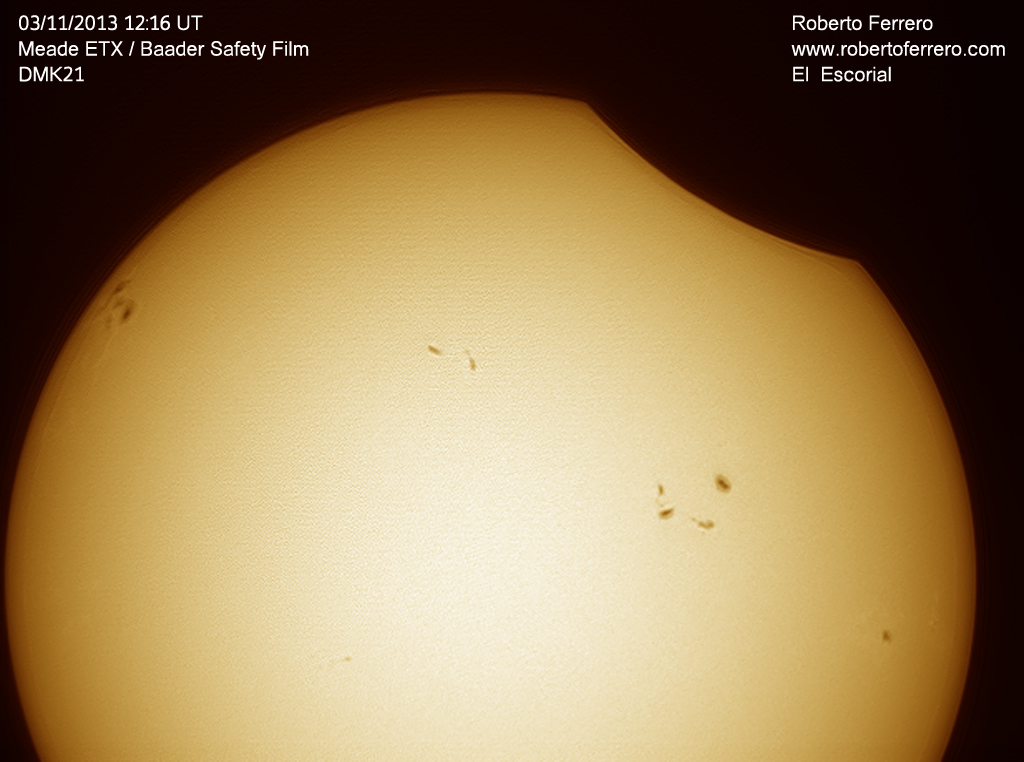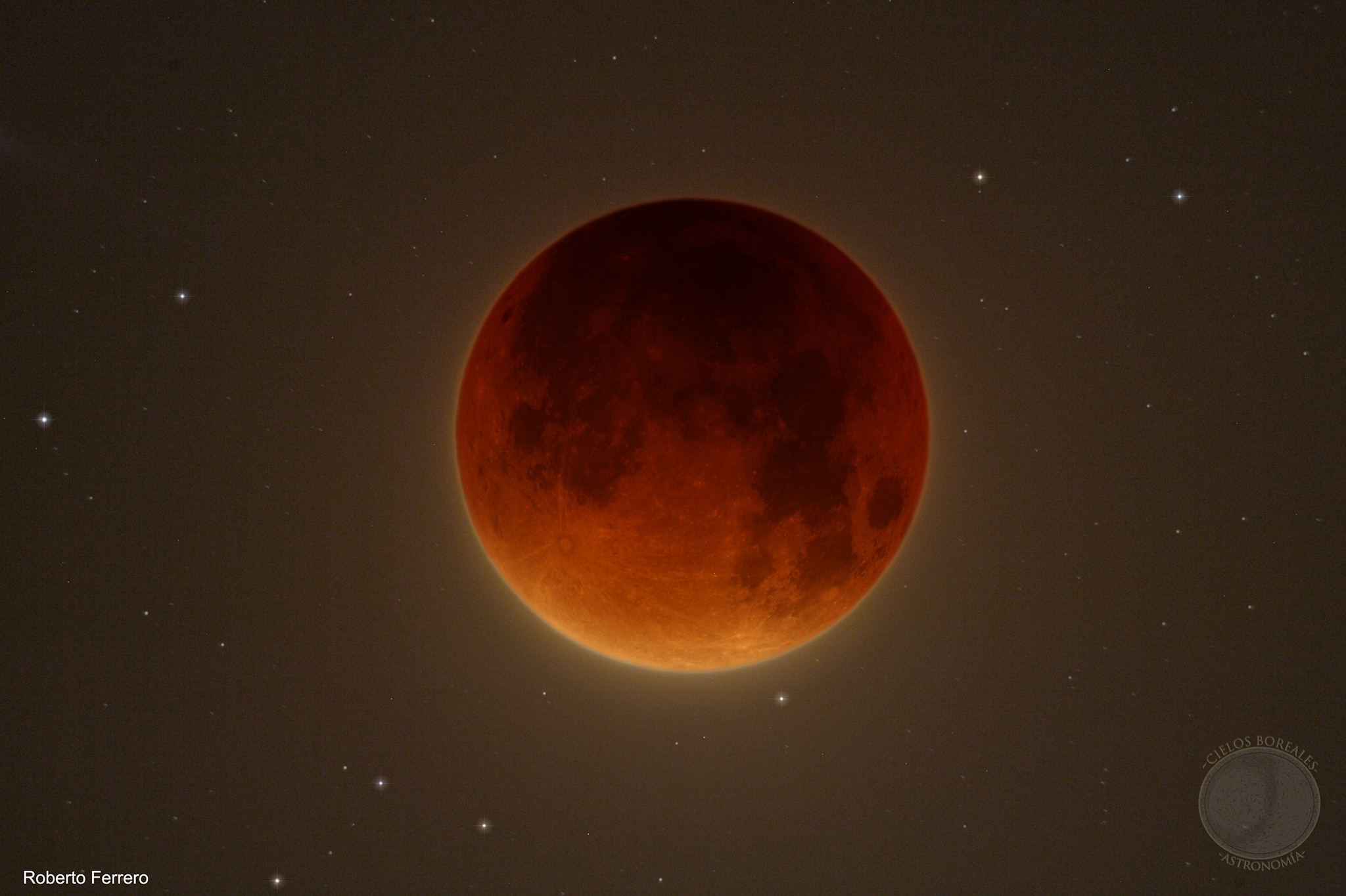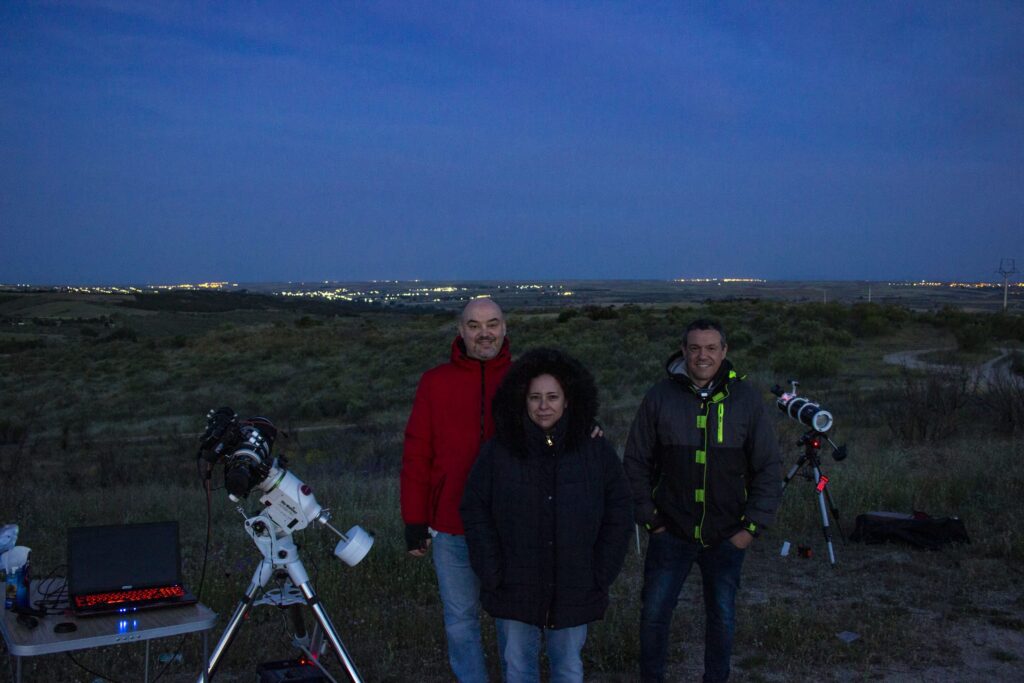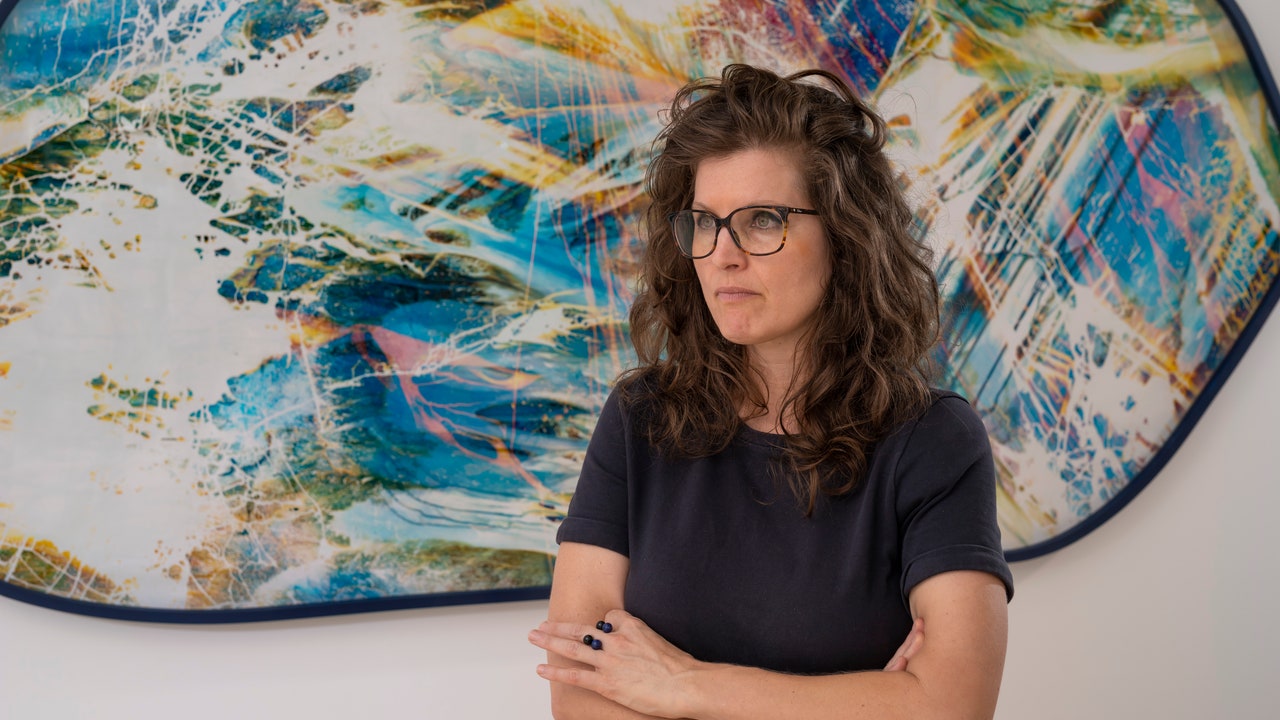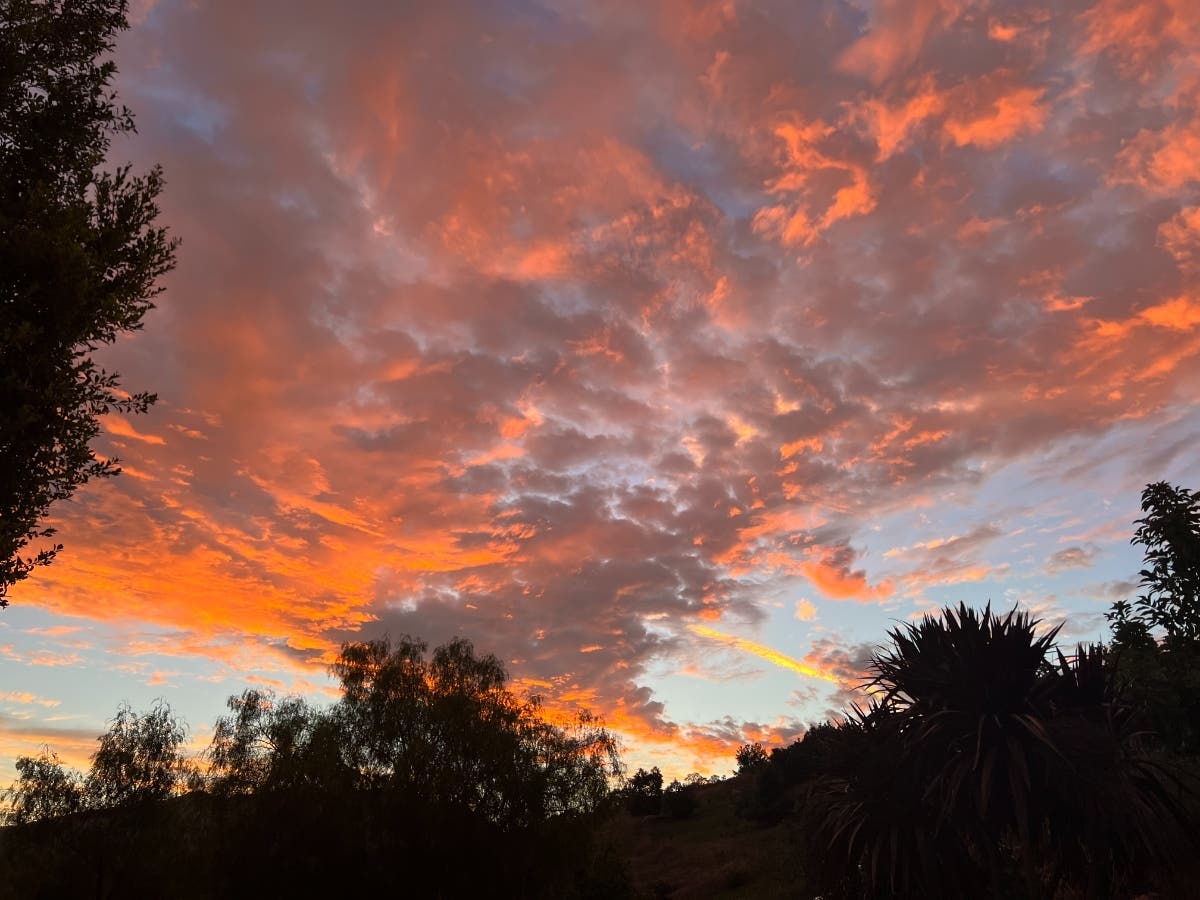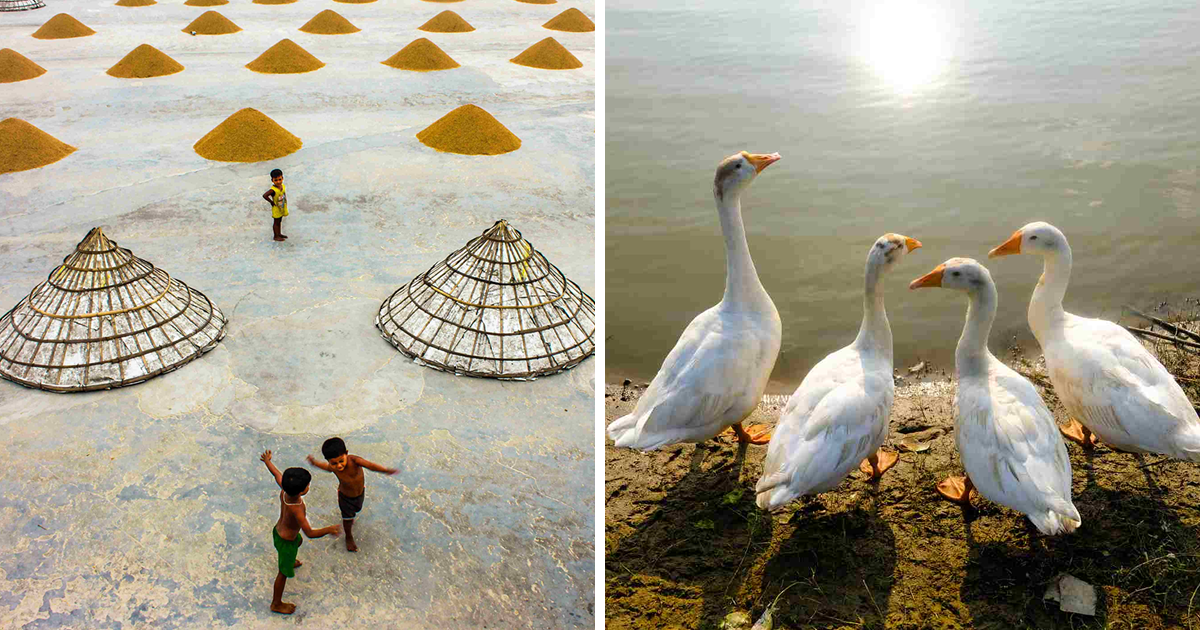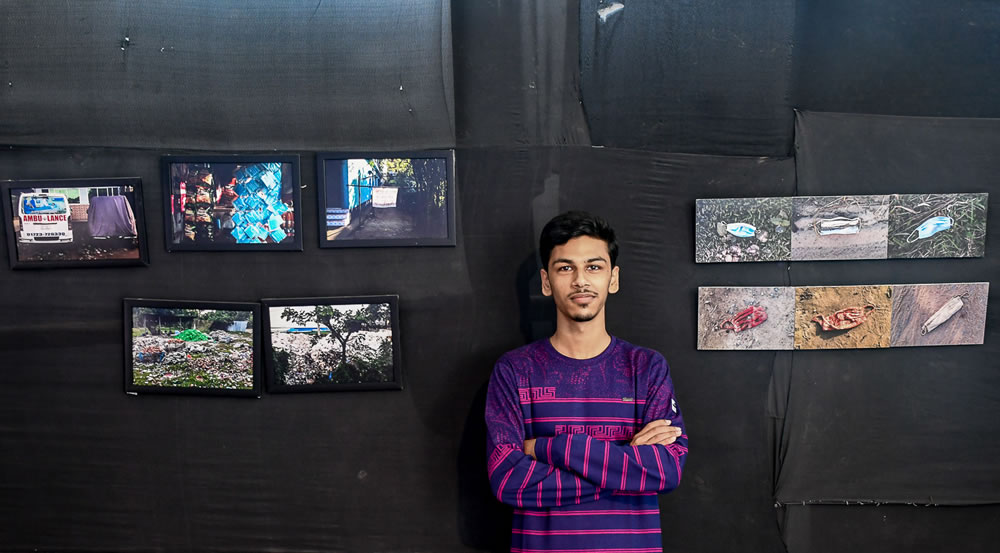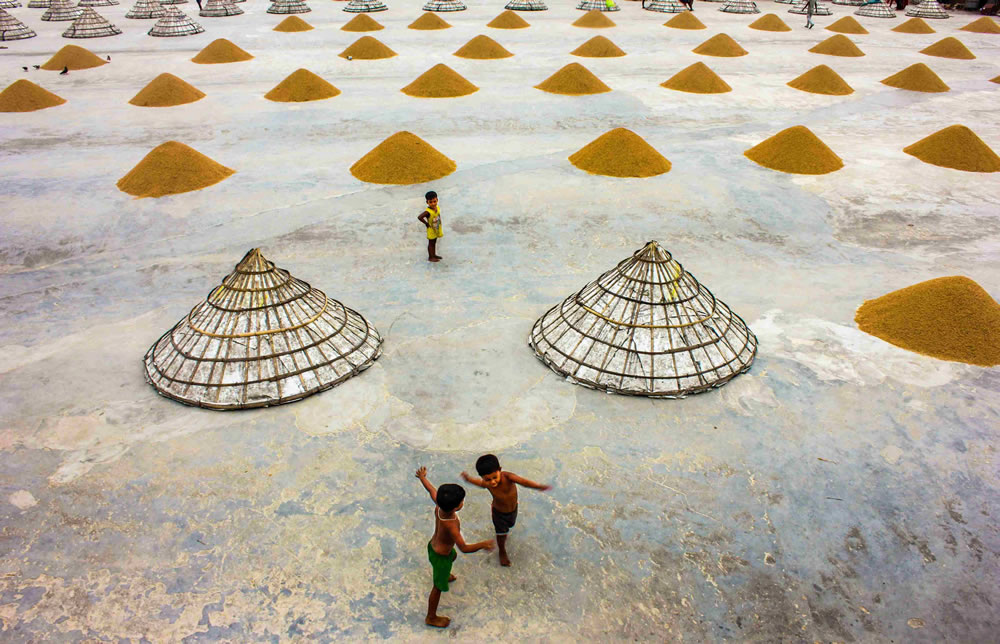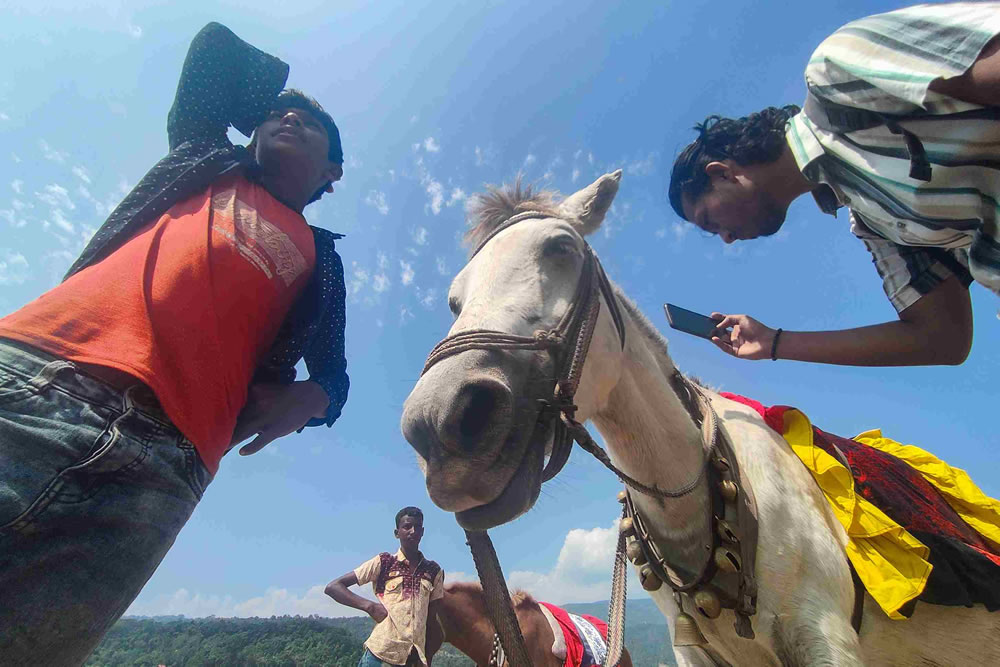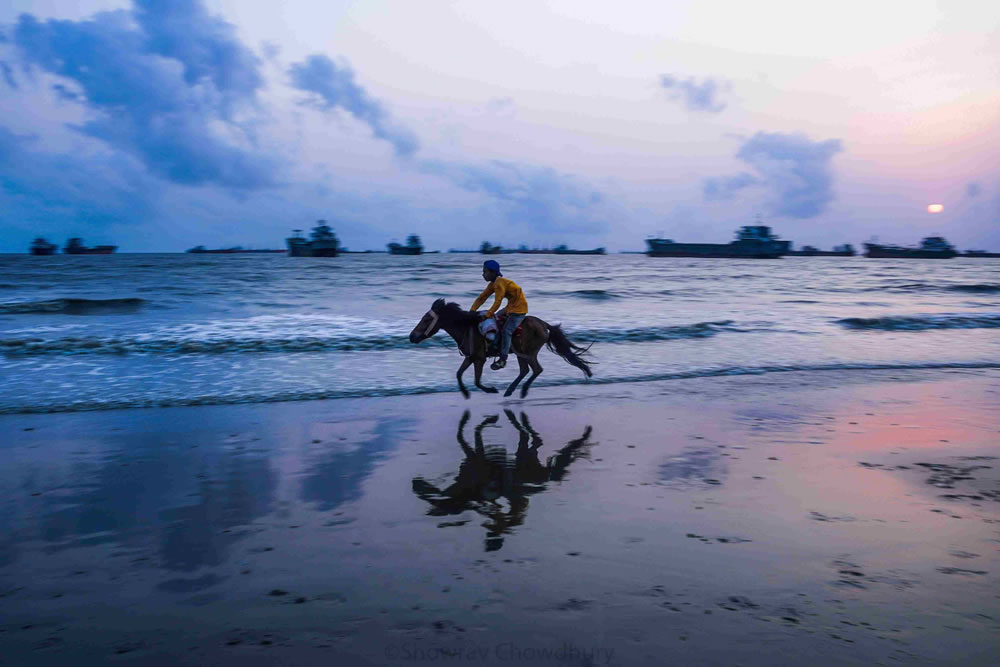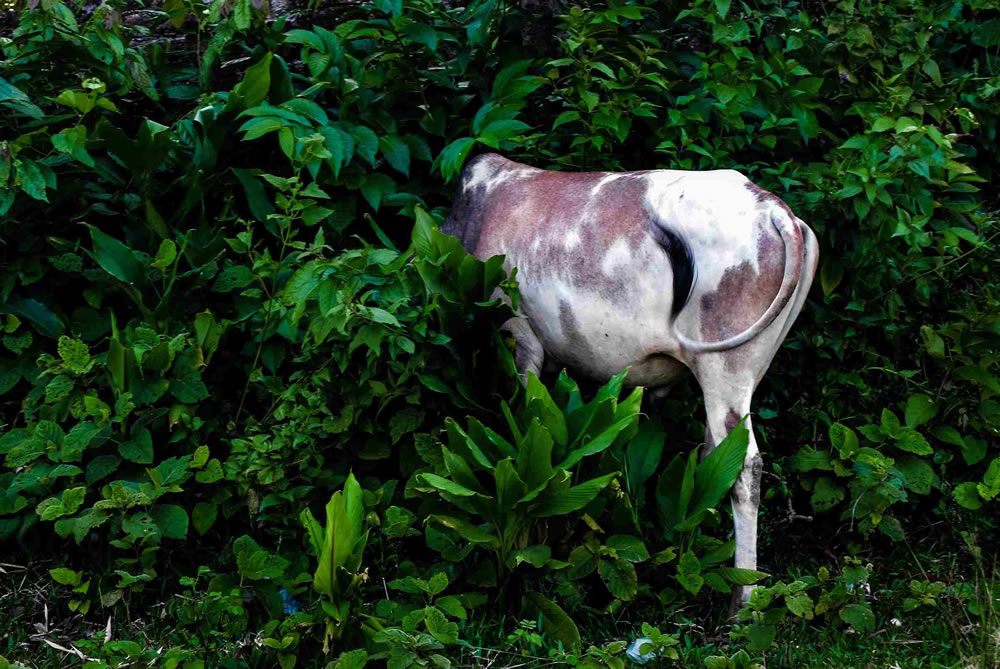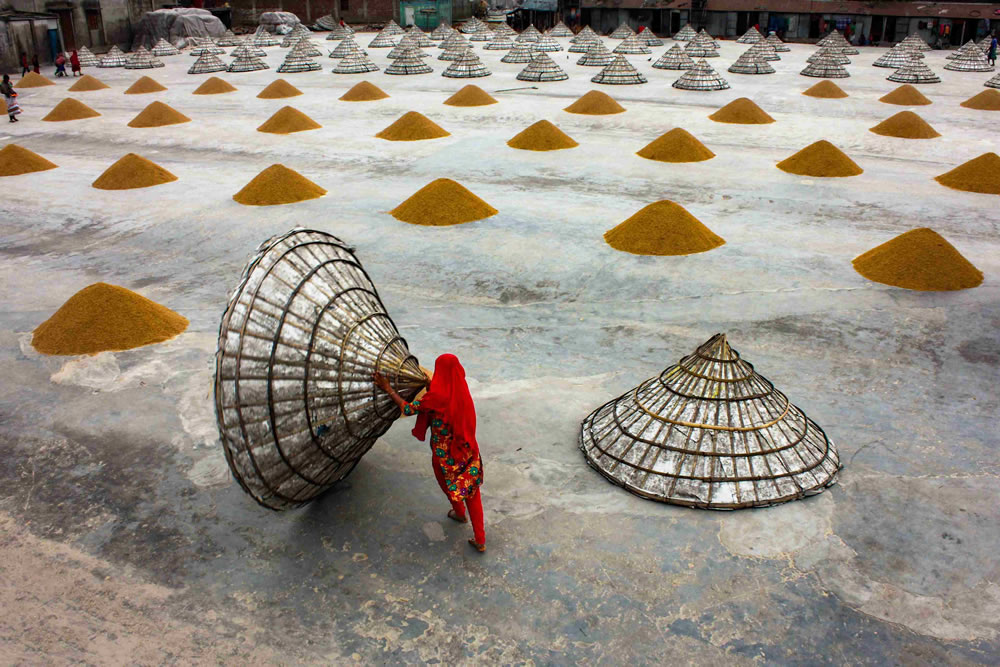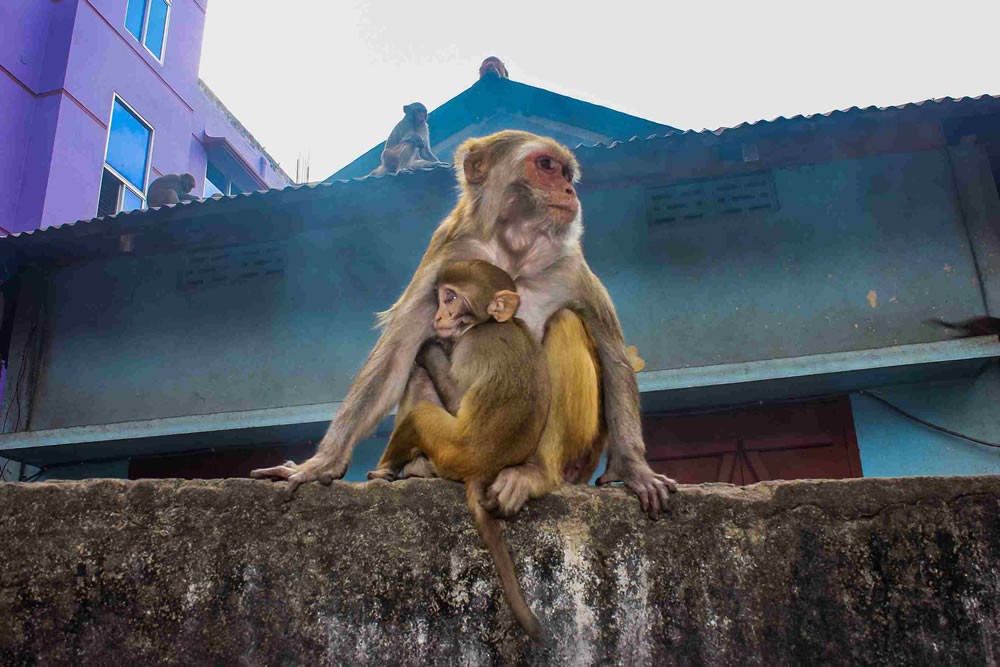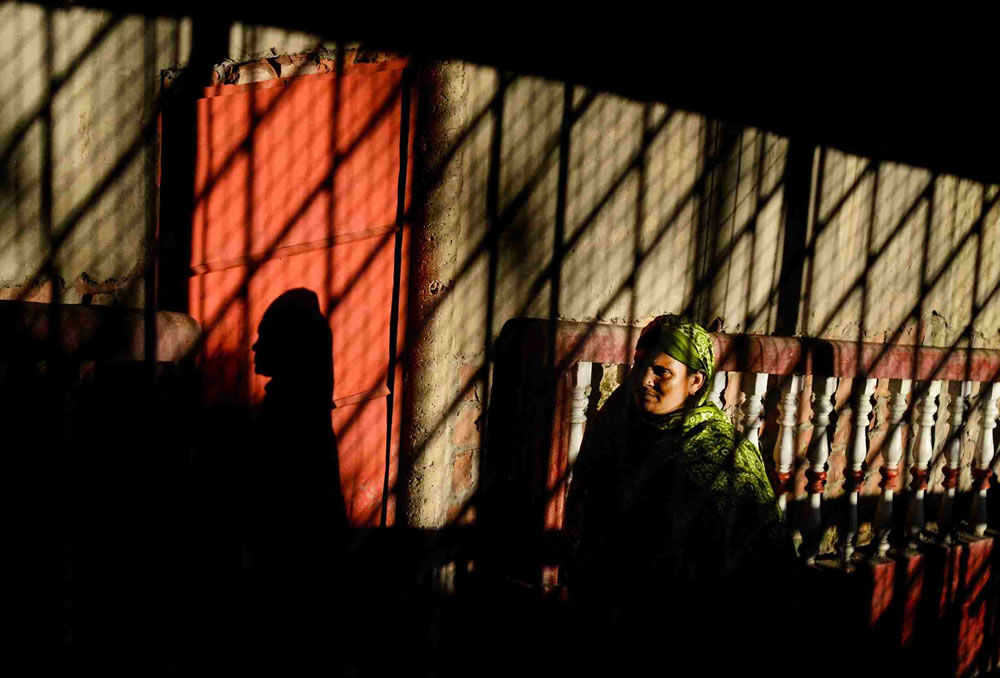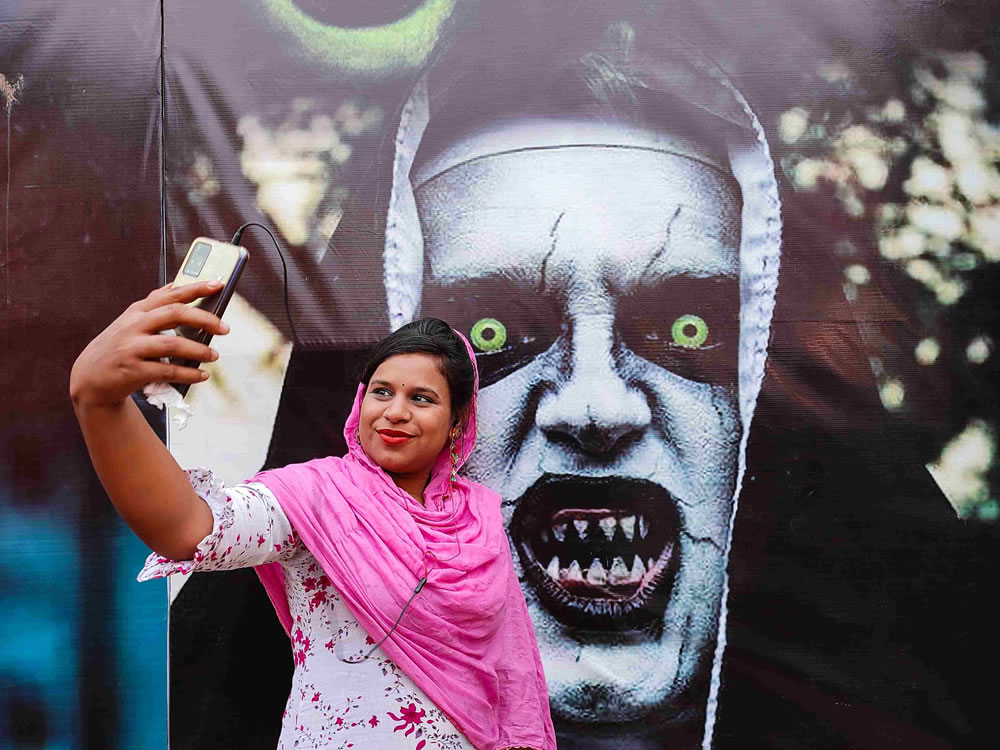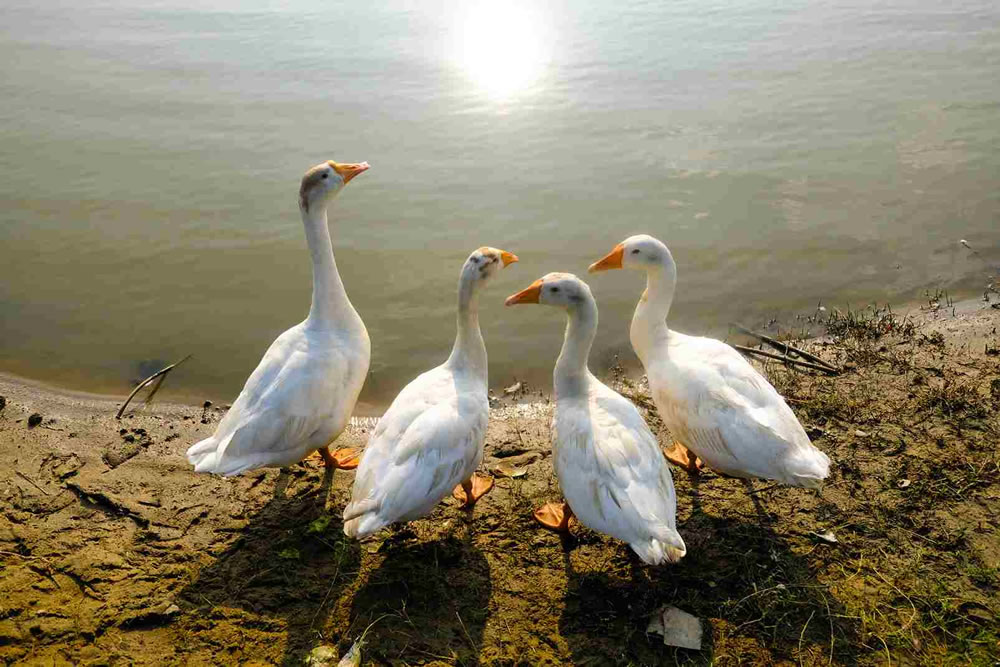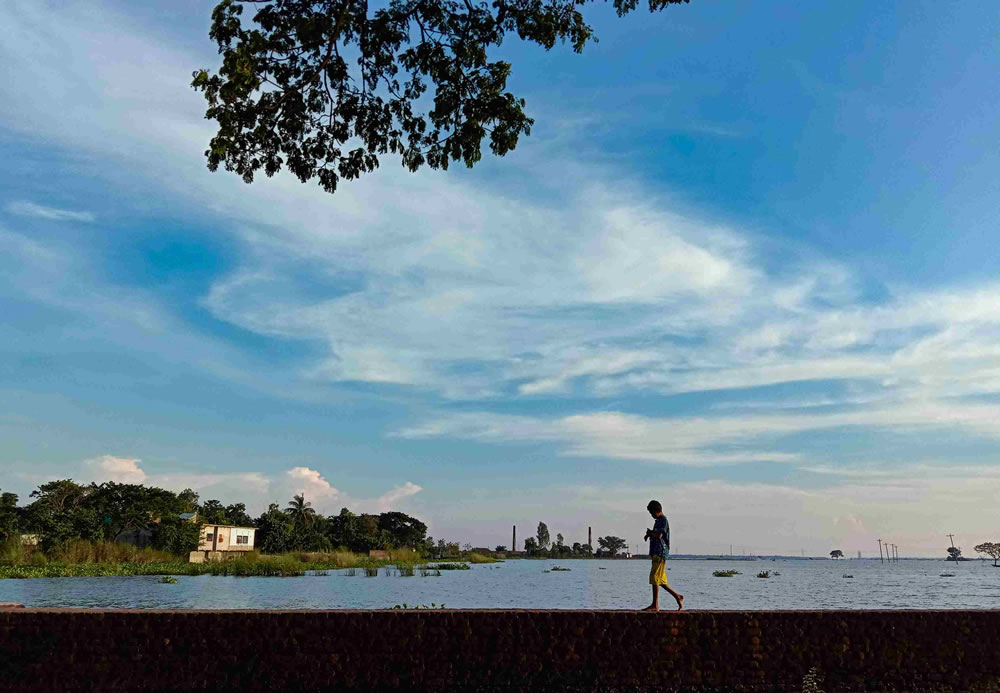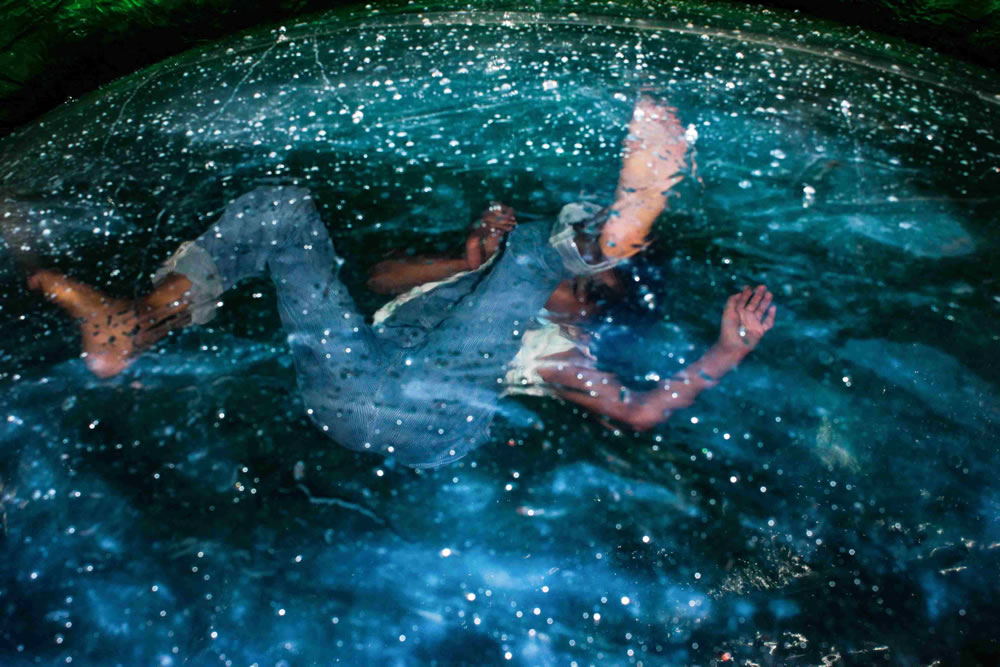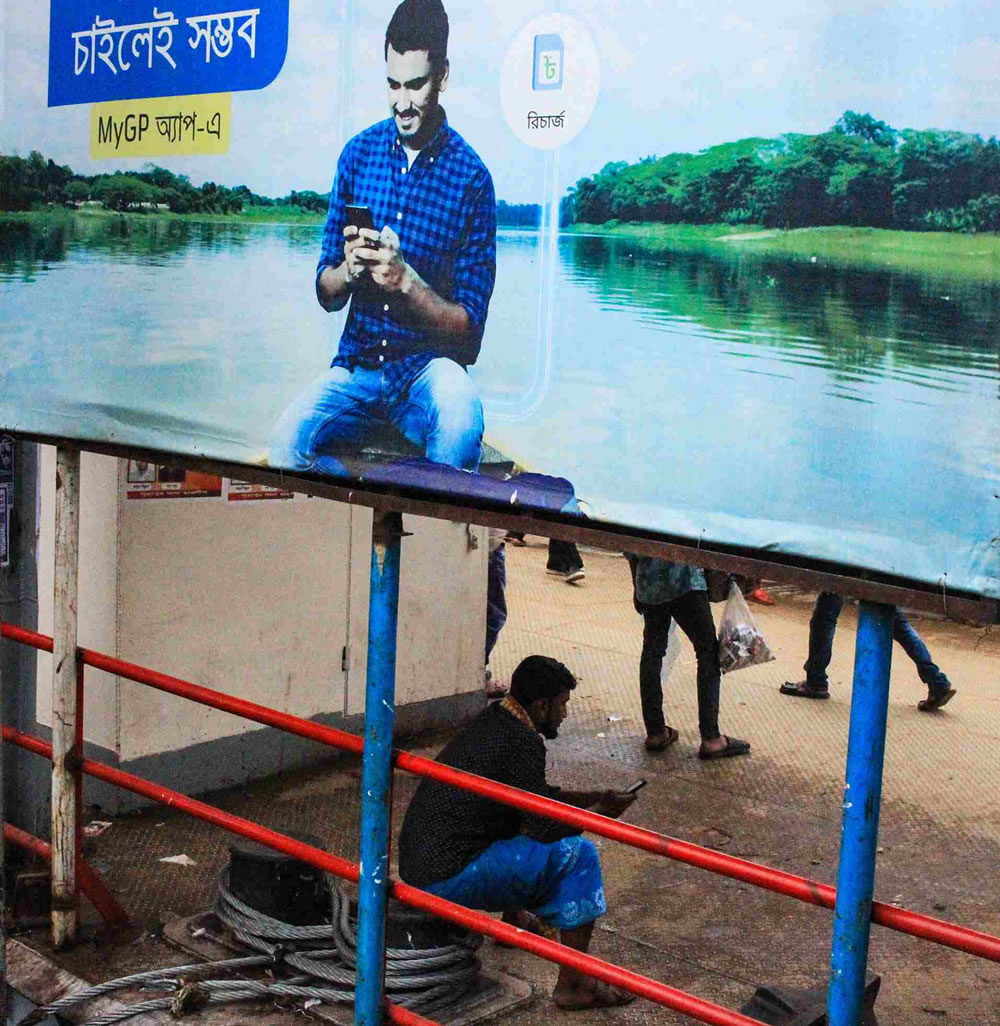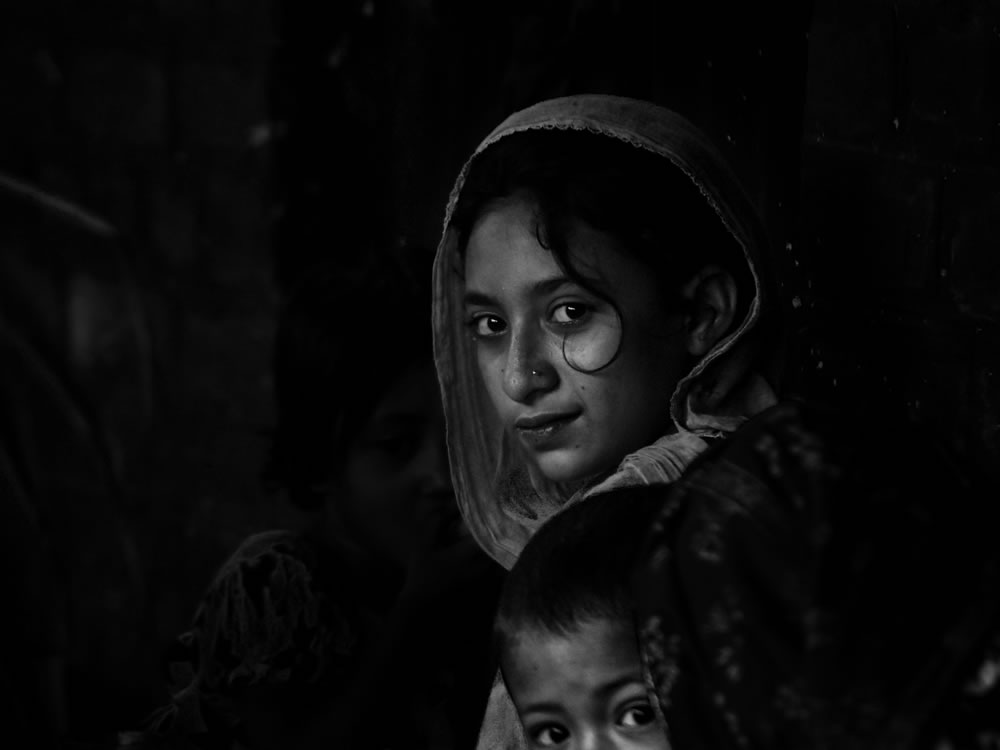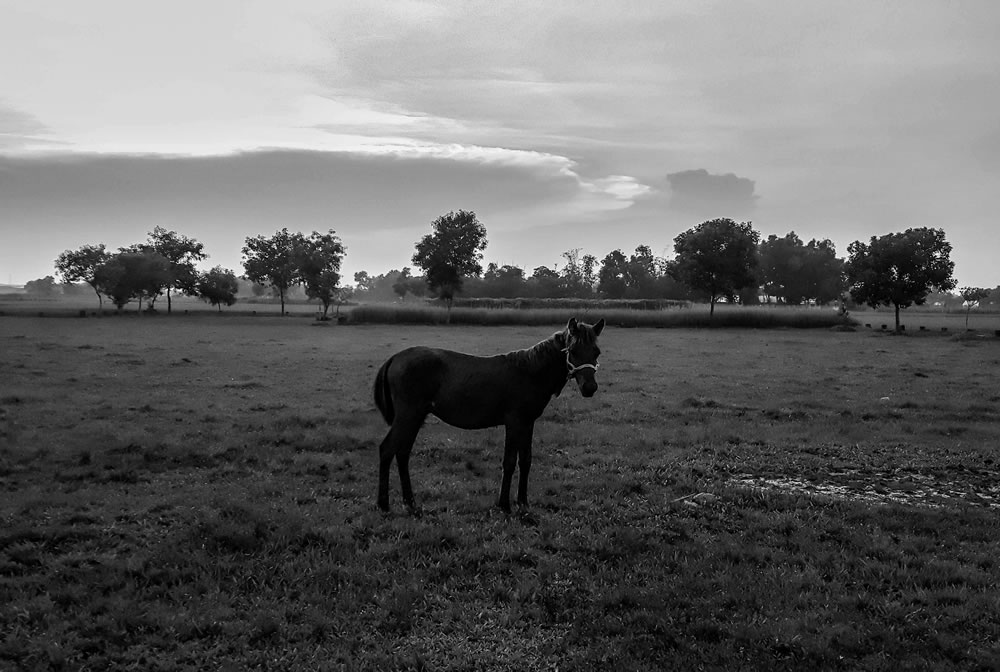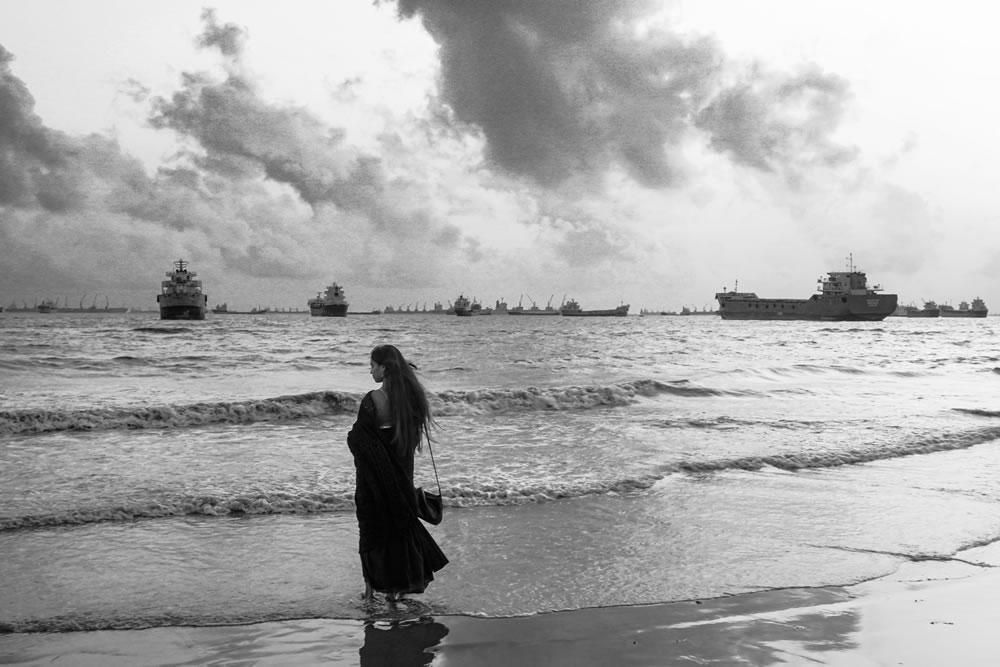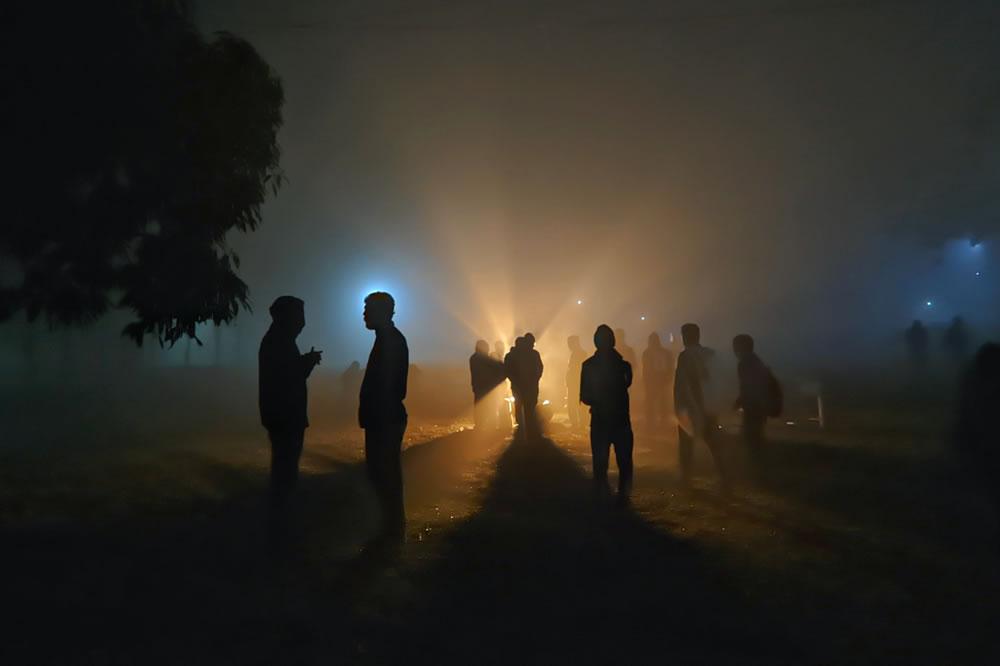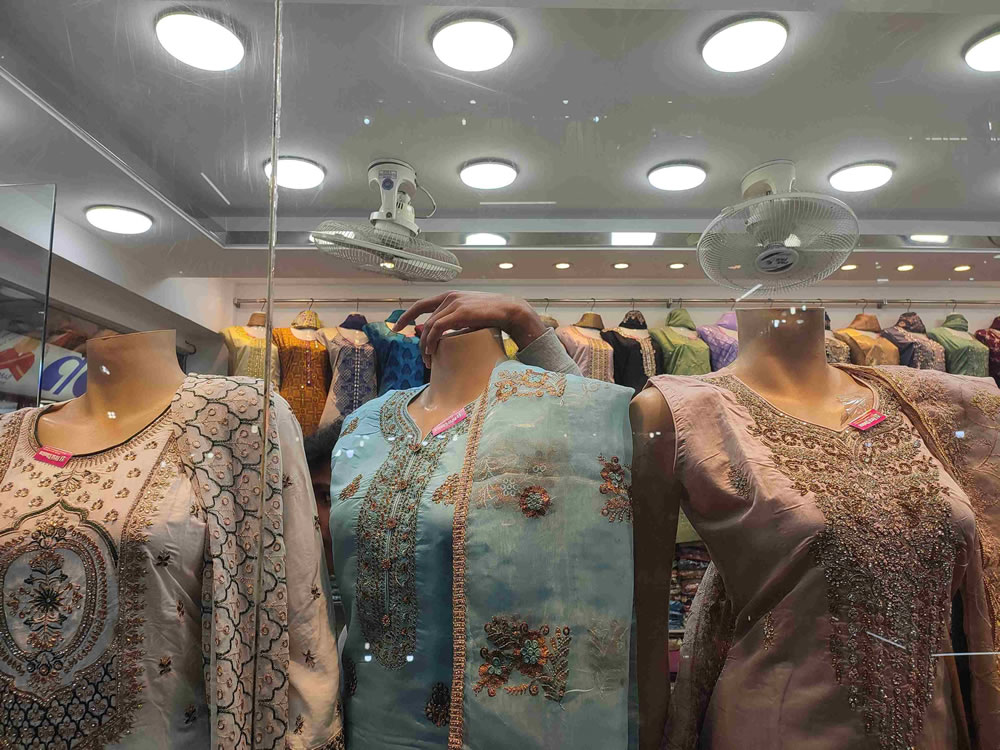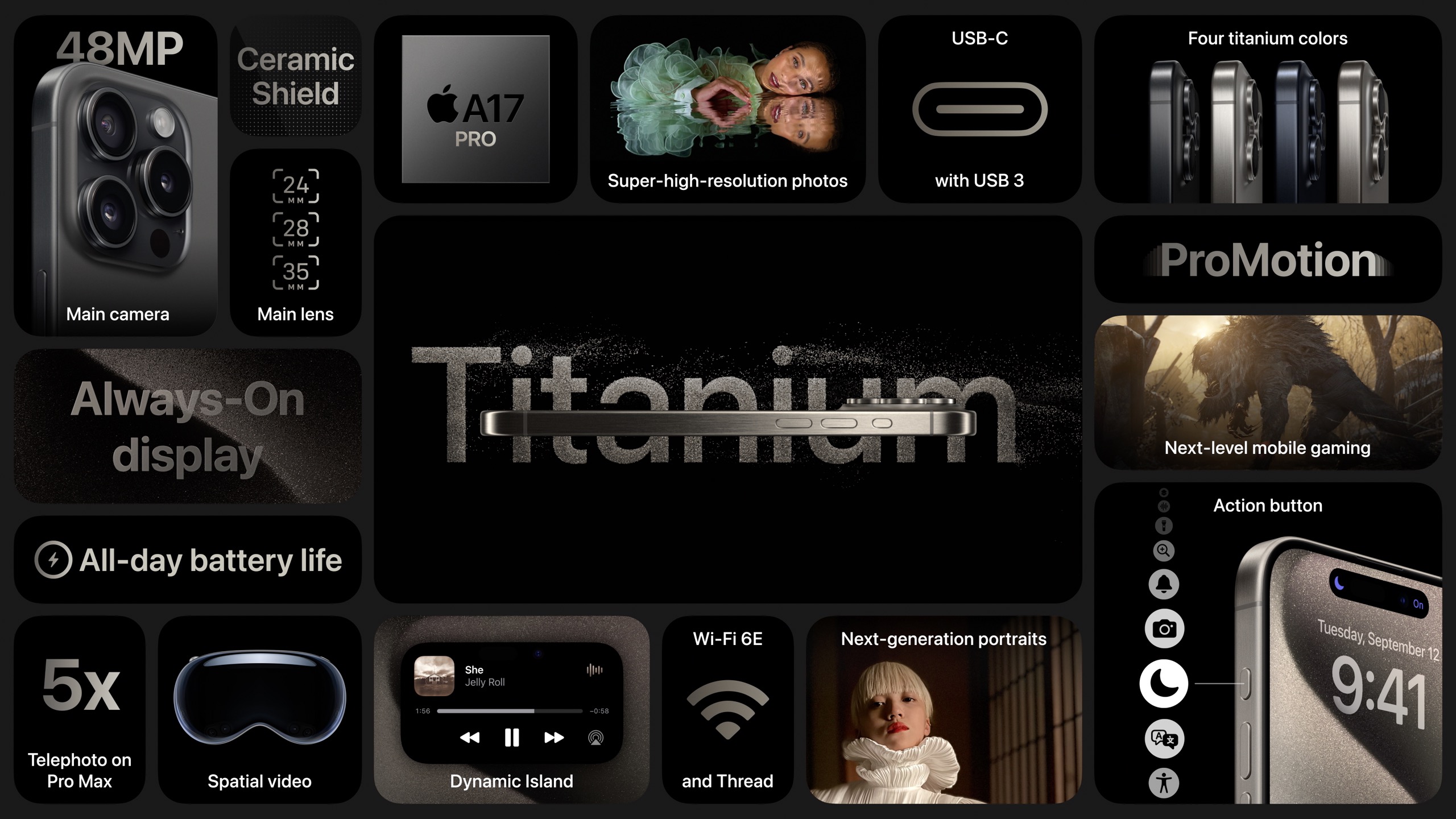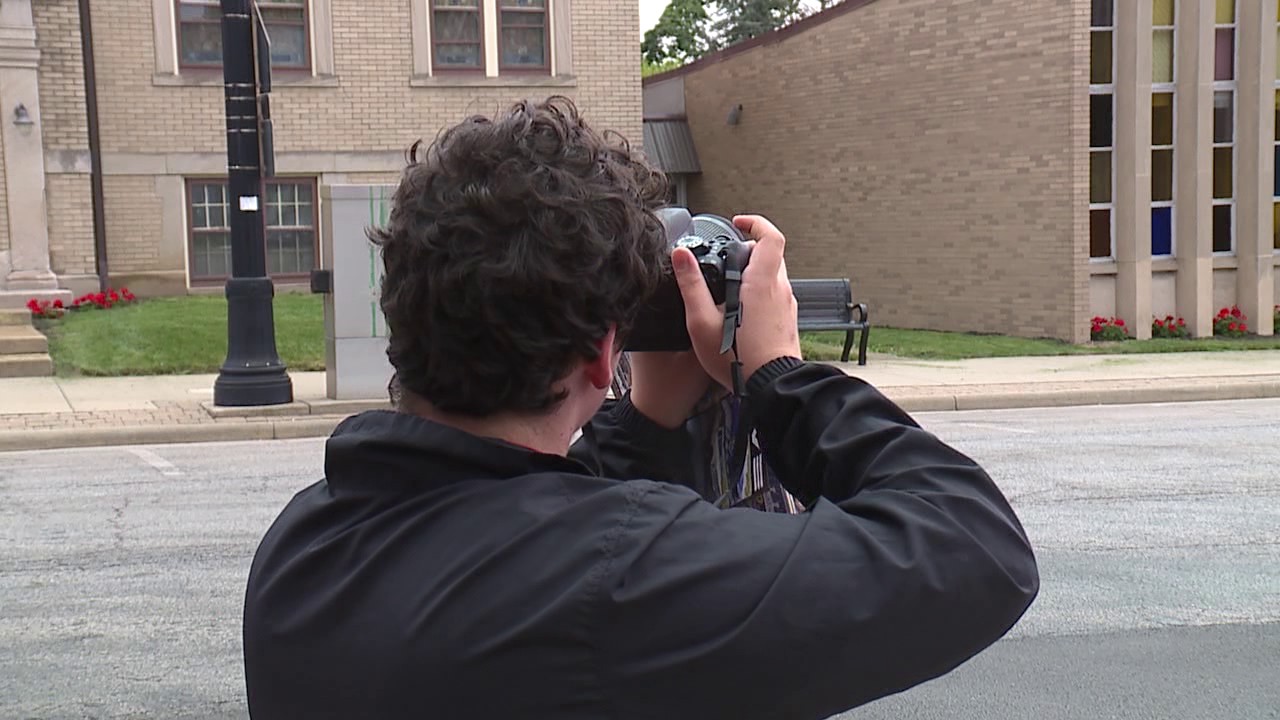Klea McKenna looks over various pieces for upcoming gallery.
Photo: Jessica Christian/The Chronicle
Like many artists, Klea McKenna felt her creative practice shift and evolve in surprising new directions during the COVID pandemic.
The San Francisco experimental photographer, whose latest body of work is currently on view in the exhibition “Vessel” at Euqinom Gallery, gave birth to her second child four months before the lockdown. When her studio space in the Minnesota Street Project temporarily closed its doors, curtailing interactions with her creative peers, and the city’s schools shut down, she started working on the rooftop of her Bernal Heights apartment.
Yet, McKenna said that during the time of global uncertainty, she embraced an explosion of new materials and techniques, perhaps in response to everything from the changes in her own postpartum body, psyche and family structure to the disorienting new status quo of a fractured world on pause and effectively holding its breath for better news.
“I could feel I was in the throes of a major shift in my work,” McKenna told the Chronicle on a recent morning in her Dogpatch studio.
Test samples of fabric dye coat pieces of paper on a workbench inside Klea McKenna’s studio in San Francisco.
Photo: Jessica Christian/The Chronicle
She described augmenting her hand-embossed, black-and-white photograms (camera-less prints on light-sensitive paper) with bold, saturated colors like violet and blood red. McKenna also explored the potential of a wider array of historical and everyday found objects: flea market paintings, vintage handkerchiefs, even mass-manufactured cardboard boxes (which take on a weightier, medical symbolism when one knows they were originally filled with latex gloves or tissues).
Unexpectedly, the photoreliefs she’d become best known for, of natural elements such as rain, tree rings and spider webs, grew layered with painting, collage and intaglio printing, moving toward an unexpected maximalism and even further removed from traditional photography.
“Klea doesn’t call herself a painter, but these are paintings,” said Euqinom founder and director Monique Deschaines at the “Vessel” opening reception on Saturday, Sept. 9. “And she doesn’t use a camera, but they are also photographs. Her work is impossible to categorize.”
Details and notes for her work hang inside artist Klea McKenna’s studio in San Francisco. Her book, “Witness Mark,” will be published in September.
Photo: Jessica Christian/The Chronicle
In the Euqinom show, womanly breasts, nipples and womb-like curves appear alongside terraced shapes and voids reminiscent of Incan or Navajo geometry.
“I stopped compartmentalizing so much and let my identities and interests all bleed together,” McKenna explained. “I just knew that what I was making reflected my moment. And whatever else the prolonged moment of the last three years has been, for myself and I think for a lot of us, it’s certainly felt pretty chaotic and messy.”
Embracing that messiness, and continuing to chart her path “away from straight photography” since graduating from San Francisco’s California College of the Arts in 2009, McKenna is now experiencing her own prolonged moment of art-world success and recognition. Just this year, she was one of only 15 American photographers to receive a prestigious Guggenheim Fellowship.
Klea McKenna’s “Witness Mark” is seen at her studio in San Francisco on Aug. 17.
Photo: Jessica Christian/The Chronicle
While “Vessels” is on view, she has also released her first monograph, “Klea McKenna: Witness Mark.” Published by Saint Lucy Books, it covers five distinct bodies of her work from roughly 2013 to 2019, and includes an illuminating essay by Oakland photographic historian Corey Keller.
More Information
Klea McKenna: Witness Mark
Text by Corey Keller, Vanessa Kauffman Zimmerly, Leah Ollman and Klea McKenna
(Saint Lucy Books; 230 pages; $50)
“Klea McKenna: Witness Mark” book release event: A panel discussion, reading and book signing with Klea McKenna, Corey Keller, Leah Ollman and Vanessa Kauffman Zimmerly. 6 p.m. Thursday, Sept. 14. Free, but must RSVP to [email protected]. Minnesota Street Project, 1275 Minnesota St., S.F.
“Vessel: Julia Goodman & Klea McKenna”: 11 a.m.-5:30 p.m. Tuesday-Saturday. Through Oct. 28. Euqinom Gallery, 49 Geary St., Suite 417, S.F. www.euqinomgallery.com
“I love that I have a book now where I can just show you what I’m talking about,” McKenna said, reaching for a fresh copy of “Witness Mark” beside her studio desk and flipping to an image from her “Faultlines” series. The hand-embossed imprints of natural cracks she found in rocks or cement, which she “rubbed” on photographic paper with other women at night in darkness before exposing the images to light, help illustrate her unusual process.
McKenna fell in love with camera-less photograms around 2007, out of an exasperation with an art world smitten at the time with large-format, hyperrealistic color photography. Digital images had never been easier to shoot, retouch and disseminate, and yet she felt frustrated with the medium’s predictability.
“I would go out and find the perfect thing to photograph, but where was the magic in taking a picture and getting it back only to confirm it looks exactly like what you saw when you took it? I wanted there to be some alchemy in the process,” she said.
Klea McKenna stands amid her artwork while working on various pieces for upcoming gallery shows while at her studio in San Francisco last month. The first book of her work, “Witness Mark,” will be published in September.
Photo: Jessica Christian/The Chronicle
It’s a sentiment shared by other celebrated photographers, like the Bay Area’s Megan Riepenhoff, Chris McCaw and Binh Danh, who have also embraced older, physical and entirely analog processes.
McKenna said she landed on photograms as her medium of choice because they were a way to make one-of-a-kind images that emphasize touch rather than sight, a distinguishing feature of her work within the primarily visual medium of photography. Viewers can’t help but wonder about the physical labor — all the rubbing, buffing and burnishing — that created it.
The enigmatic images of tree rings in her “Automatic Earth” series resemble an unknown coastline or topographic map, while in “Rain Studies,” she’s captured abstract swaths of raindrops as they fall through the night sky. Working at night in Hawaii and here at home, exposing the paper by flashlight, some drops read as perfect crystalline teardrops, others blurred in motion or as small pointillist dots ready to burst.
“They were meant to create a cross-sensory experience, to convey the feeling of standing in the pouring rain, even the sound of it,” said McKenna.
Artist Klea McKenna works on various pieces at her studio in San Francisco.
Photo: Jessica Christian/The Chronicle
These various bodies of work are the product of touch and were by necessity created in darkness, their final reveal in the darkroom giving McKenna the surprise factor she longed for as a grad student disenchanted with the easy, no-stakes perfection of digital technology.
She ascribes her “comfort with darkness” to a “deeply bohemian” childhood, spent moving at a young age between rural west Sonoma County and an off-the-grid, one-room hexagonal home her parents built “on the side of a volcano in Kona, Hawaii.”
The daughter of ethnobotanists Kathleen Harrison and the late Terence McKenna, a famous early advocate for the transformational potential of psychedelics, she said her parents instilled in her a deep awareness of nature’s intricate and potent patterns. It’s in the unexpected beauty found in texture and in light that still fuels her creative process.
“At the apex of the wooden ceiling was a giant skylight in the shape of a prism,” McKenna writes in a personal essay on “Light” in her new book, remembering her childhood Hawaiian home. “In the absence of electricity, our days were timed with the sun. Inside my eyelids I still see sunlight filtered through a scarf pinned up over a window.”
Jessica Zack is a freelance writer.
